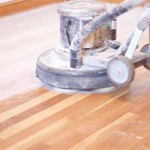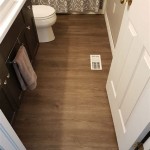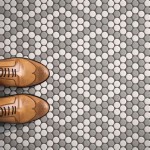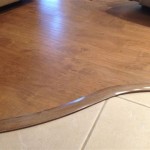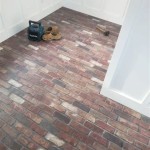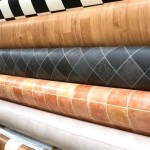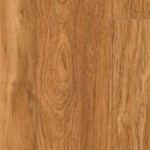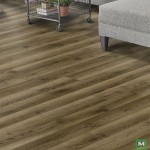Everything You Need To Know About Laminate Floor Repair Kits
Laminate flooring, prized for its durability and aesthetic appeal, is a popular choice for residential and commercial spaces. However, despite its resilient nature, laminate flooring is susceptible to damage from various sources, including scratches, chips, dents, and water damage. Repairing damaged laminate flooring can be a cost-effective alternative to replacing the entire floor. Laminate floor repair kits provide a convenient solution for addressing minor flaws and restoring the floor's original appearance.
This article offers a comprehensive guide to laminate floor repair kits, covering their types, components, selection criteria, application techniques, and limitations. Understanding these aspects empowers property owners and maintenance professionals to effectively utilize these kits and maintain the longevity and beauty of their laminate floors.
Types of Laminate Floor Repair Kits
Laminate floor repair kits are categorized based on the types of damage they are designed to address. The three primary types include filler kits, putty kits, and marker kits. Each type utilizes different materials and application methods, making them suitable for specific types of damage.
Filler kits are formulated to repair larger imperfections such as chips, dents, and gouges. These kits typically contain a multi-component epoxy or acrylic resin that, when mixed, creates a durable and color-matching filler. The filler is applied to the damaged area, allowed to cure, and then sanded smooth to blend seamlessly with the surrounding flooring. Filler kits often come with a color palette, enabling users to customize the filler's hue to match the floor's existing color.
Putty kits are designed for smaller repairs, such as scratches and minor surface imperfections. These kits incorporate a pre-colored putty-like substance that can be directly applied to the damaged area. The putty fills the scratch or imperfection and is then smoothed and buffed to create a uniform surface. Putty kits are typically easier to use than filler kits, but they may lack the strength and durability required for repairing larger damages.
Marker kits are designed for camouflaging shallow scratches and minor discoloration. These kits consist of a set of markers filled with color-matched ink that closely resembles the flooring's color. The marker is applied directly to the scratch, effectively concealing it and restoring the floor's aesthetic appeal. Marker kits are the simplest to use but offer the least robust repair solution, as they merely cover the damage rather than physically filling it.
Key Components of Laminate Floor Repair Kits
A comprehensive understanding of the components included in laminate floor repair kits is essential for effective utilization and repair. The typical components vary depending on the type of kit, but some common items include filler material, hardener, color pigments, applicators, sanding tools, and cleaning solutions.
Filler material is the primary component of filler kits and is typically composed of epoxy or acrylic resin. This material is designed to fill the damaged area and provide a durable and long-lasting repair. The filler material is usually supplied in two parts: a resin and a hardener, which are mixed to initiate the curing process.
Color pigments are often included in filler kits to allow users to customize the color of the filler material to match the flooring's existing hue. These pigments are added to the mixed resin and hardener, enabling a precise color match. A color chart is typically provided to guide the mixing process and ensure accurate color matching.
Applicators are tools used to apply the filler material, putty, or ink to the damaged area. These may include spatulas, putty knives, or syringes, depending on the kit's type. Applicators facilitate precise and even application, ensuring a professional-looking repair.
Sanding tools are used to smooth and blend the repaired area with the surrounding flooring in filler kits. Sanding blocks, sandpaper, or specialized sanding tools are often included to achieve a seamless transition between the repaired area and the undamaged floor.
Cleaning solutions are sometimes included to prepare the damaged area for repair. These solutions remove dirt, debris, and grease, ensuring proper adhesion of the filler material or putty. Cleaning the area before application enhances the repair's longevity and aesthetic appeal.
Selecting the Right Laminate Floor Repair Kit
Choosing the appropriate laminate floor repair kit is crucial for achieving optimal repair results. Several factors should be considered when selecting a kit, including the type and extent of the damage, the flooring's color and pattern, and the user's skill level. Selecting the wrong kit can lead to ineffective repairs or even exacerbate the damage.
Damage assessment is the first step in selecting the right kit. Determine the type of damage (scratch, chip, dent, or water damage) and its extent (depth and size). Filler kits are suitable for larger damages, while putty kits are appropriate for smaller imperfections. Marker kits are best for superficial scratches or color fading. For water damaged areas, it is important to assess the degree of the damage. Extensive water damage may require replacing the damaged planks rather than repair.
Color matching is essential for achieving a seamless repair. Select a kit that comes with a range of color pigments or a color chart to match the flooring's existing color. If an exact match is not available, consider mixing different colors to create a custom blend. Color matching is critical for maintaining the floor's aesthetic appeal and avoiding a noticeable repair.
Ease of use is an important consideration, especially for novice users. Marker kits are the easiest to use, while filler kits require more skill and attention to detail. Choose a kit that matches the user's skill level to ensure a successful repair. Kits with clear instructions and readily available tutorials can also be beneficial.
Durability and longevity are important factors to consider, particularly for high-traffic areas. Filler kits typically offer the most durable repairs, as they physically fill the damaged area and bond to the flooring. Putty kits and marker kits provide less durable repairs, as they merely cover the damage. Consider the traffic level in the area and choose a kit that provides the appropriate level of durability.
Compatibility with flooring is crucial. Ensure that the repair kit is compatible with the specific type of laminate flooring. Some kits are designed for certain types of laminate, such as those with a melamine or aluminum oxide coating. Using an incompatible kit can damage the flooring or result in an ineffective repair. Always read the product information carefully to ensure compatibility.
Application Techniques for Laminate Floor Repair Kits
Proper application techniques are essential for achieving optimal results when using laminate floor repair kits. The specific techniques vary depending on the type of kit, but some common steps include cleaning the damaged area, preparing the filler material, applying the filler, sanding and smoothing, and finishing the repair.
Cleaning the damaged area is the first step in the repair process. Remove any dirt, debris, or grease from the damaged area using a mild cleaner and a soft cloth. This ensures proper adhesion of the filler material or putty. Allow the area to dry completely before proceeding with the repair.
Preparing the filler material involves mixing the resin and hardener according to the manufacturer's instructions. Use the provided color pigments to match the flooring's existing color. Mix the ingredients thoroughly until a uniform color and consistency are achieved. Follow the mixing ratios carefully to ensure proper curing and durability.
Applying the filler is done using a spatula or putty knife. Apply the filler to the damaged area, ensuring that it completely fills the void. Overfill the area slightly to allow for sanding. Use the applicator to create a smooth and even surface. Remove any excess filler from the surrounding area.
Sanding and smoothing are performed after the filler has cured completely. Use a sanding block or specialized sanding tool to smooth the repaired area and blend it with the surrounding flooring. Start with a coarse grit sandpaper and gradually move to a finer grit to achieve a seamless transition. Be careful not to sand too aggressively, as this can damage the surrounding flooring.
Finishing the repair may involve applying a sealant or finish to protect the repaired area. This can help to prevent future damage and enhance the durability of the repair. Follow the manufacturer's instructions for applying the sealant or finish. Allow the finish to dry completely before using the floor.
Limitations of Laminate Floor Repair Kits
While laminate floor repair kits offer a convenient solution for addressing minor flaws, they have limitations. These limitations should be considered before attempting repairs to ensure realistic expectations and avoid exacerbating the damage. Recognizing the limitations allows for informed decisions regarding whether to attempt a repair or seek professional intervention.
Color matching challenges can arise, particularly with older or faded flooring. Achieving an exact color match can be difficult, even with color pigments, resulting in a noticeable repair. Factors such as sunlight exposure and wear can alter the flooring's color over time, making it challenging to replicate the original hue. In these cases, professional color matching services may be required.
Structural damage to the subfloor or underlying layers cannot be addressed with laminate floor repair kits. If the damage extends beyond the surface layer of the laminate flooring, more extensive repairs or even replacement of the affected section may be necessary. Addressing structural damage requires专业 knowledge and expertise.
Extensive water damage may render laminate floor repair kits ineffective. Laminate flooring is susceptible to water damage, which can cause swelling, warping, and delamination. In cases of significant water damage, the affected planks may need to be replaced entirely. Repair kits are typically suitable for addressing localized and minor water damage.
DIY limitations can impact the quality of the repair. Users with limited experience may struggle to achieve a seamless and professional-looking repair. Proper application techniques, color matching, and sanding are essential for achieving optimal results. If unsure about one's abilities, it is advisable to seek professional assistance.
Long-term durability of repairs made with laminate floor repair kits may not match the original flooring. While the repairs can effectively address minor flaws, they may not be as durable or resistant to wear and tear as the original laminate. In high-traffic areas, the repair may require periodic maintenance or reapplication.

Laminate Floor Repair Kit Fix A

How To Fix A Chipped Laminate Floor Coconix

Hardwood Floor Repair Kit Laminate Vinyl With Ca

Creaky Laminate System Friction Reducers Reduce Floor Squeaks

19 Piece Wood Wooden Flooring Surface Laminate Floor Furniture Repai Spares2go

Laminate Flooring Repair Kit All Tools Direct

Quick Step Repair Kit Ambience Hardwood Flooring

How To Repair Laminate Floors A Step By Guide

Picobello Laminate Vinyl Wood Flooring Repair Kit

Installation Kit Hdf Laminate Floor Repair Flooring Laminated Made In China Com
Related Posts

